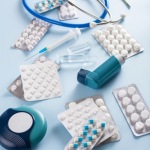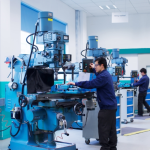Regulations: MDR and IVDR
To bolster patient safety and improve the quality of medical devices, the EU introduced two main regulations: MDR 2017/745 for general medical devices, and IVDR 2017/746 for in vitro diagnostic devices. Although both regulate entry to the EU market, their scopes and requirements are tailored to the specific type of device.
Step-by-Step – How to Achieve CE Marking
- Determine the device classification (under MDR or IVDR) – for example Class I, IIa, IIb, III for medical devices or A, B, C, D for IVDs.
- Implement and maintain a Quality Management System (QMS) appropriate for the device – typically aligned with ISO 13485.
- Prepare the technical documentation, including device description, risk analysis, clinical evidence, manufacturing specifications.
- Carry out the appropriate conformity assessment procedure – for higher-risk devices this typically involves a Notified Body.
- Affix the CE mark on the device, its packaging and instructions for use – according to Article 20 MDR.
- Maintain post-market surveillance (PMS), update documentation, monitor your quality system and perform corrective actions when required.
MDR and IVDR Regulations
The European Union has implemented two main regulations for medical devices and in vitro diagnostic medical devices: the Medical Devices Regulation (MDR) 2017/745 and the In Vitro Diagnostic Medical Devices Regulation (IVDR) 2017/746. Although both aim to increase patient safety and modernise public health, they apply to different types of medical technology and have partially separate regulations.

Medical Device Certification in the European Union According to MDR 2017/745
Rules for certification of medical devices in the European Union are presented in Regulation MDR 2017/745.

Certification of In Vitro Diagnostic Medical Devices (IVDs) in the European Union
Rules for certification of in vitro diagnostic (IVD) medical devices in the European Union is presented in Regulation IVDR 2017/746.


The Role of Notified Bodies
Notified Bodies are independent organizations designated by EU Member States, tasked with assessing conformity of medical devices and IVDs. Their responsibilities include verifying technical documentation, auditing manufacturing sites, issuing certificates, and overseeing ongoing compliance throughout the device lifecycle.
The Certification Process is Continuous
It is important to emphasize that obtaining the CE mark is not a one-off event — rather it is a continuous process. The manufacturer must maintain ongoing monitoring of device safety and performance, respond to incidents, conduct surveillance audits and analyse market data. The MDR emphasizes these lifecycle obligations.
Why CE Marking Matters
The CE mark is more than a formality — it documents that the manufacturer (or authorised representative in the EU) has carried out the conformity assessment in line with the General Safety and Performance Requirements (GSPR) and meets all regulatory obligations.
Legal Basis and Regulatory Scope
For medical devices the applicable regulation is MDR 2017/745, and for in vitro diagnostics the applicable regulation is IVDR 2017/746. Both legal acts introduce obligations such as Unique Device Identification (UDI), the appointment of a Person Responsible for Regulatory Compliance (PRRC), and post-market responsibilities (PMS/PMCF).

Device Classification and Its Impact on Conformity Assessment
The first step is for the manufacturer to determine the device class under the relevant regulation (MDR or IVDR). Devices in lower classes (e.g., Class I or Class A) may be eligible for self-certification or simpler routes, whereas higher classes (IIa, IIb, III or B, C, D for IVDs) require the involvement of a Notified Body.
Conformity Assessment Procedure – Key Stages
The process can be broken down into these essential stages:
- Identify applicable regulations and harmonised standards.
- Classify the device (based on risk, intended use, functions).
- Implement the appropriate quality management system (frequently ISO 13485) and prepare the technical documentation (design dossier, risk analysis, clinical data).
- Review of technical documentation and quality system by a Notified Body (if required by classification).
- Issue of a certificate of conformity and the EU Declaration of Conformity.
- Affix CE mark and Notified Body identification number (where applicable) on device/packaging/documentation.
- Maintain post-market compliance — surveillance, incident reporting, corrective actions, recall if necessary.
Marking & Documentation Requirements
The CE mark must be affixed visibly, legibly and permanently, typically at least 5 mm in height unless specified otherwise. In addition, the instructions for use or packaging must include information such as: manufacturer name, address, device type/model, batch/serial number, risk class, UDI (if required), warnings and safe-use instructions.
Challenges and Risks of Missing or Incorrect CE Marking
If a medical device or IVD lacks proper conformity assessment and CE marking, the manufacturer faces:
- Denial of access to the EU market – the product cannot legally be placed or sold.
- Risk of sanctions, product recall, reputational damage or liability toward patients.
- Higher costs due to late documentation, process remediation and testing.
- Reduced competitiveness and loss of business partners.
Common Mistakes Made by Manufacturers in CE Marking
Typical errors include:
- Technical documentation that is incorrect, incomplete or out of date.
- Failure to fully implement a QMS compliant with ISO 13485 or absence of required clinical evidence where needed.
- Incorrect device classification and thus inappropriate conformity assessment route.
- Lack of an effective post-market surveillance (PMS/PMCF) system or insufficient corrective actions.




























